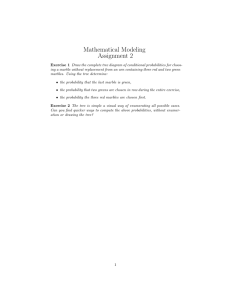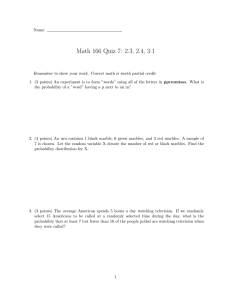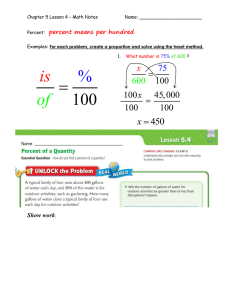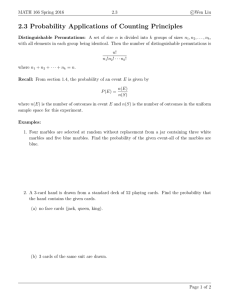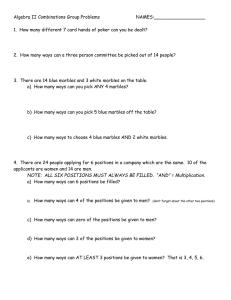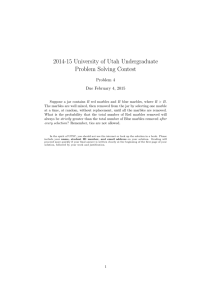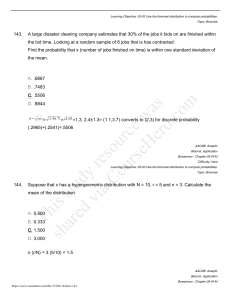HYPERGEOMETRIC DISTRIBUTIONS
advertisement
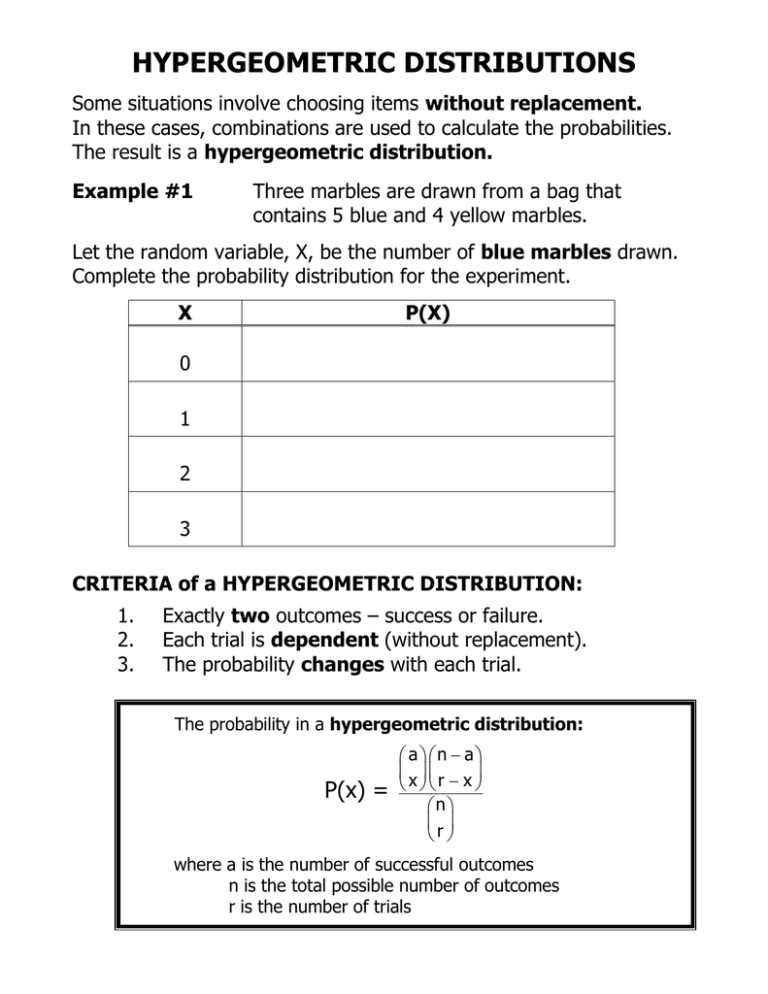
HYPERGEOMETRIC DISTRIBUTIONS Some situations involve choosing items without replacement. In these cases, combinations are used to calculate the probabilities. The result is a hypergeometric distribution. Example #1 Three marbles are drawn from a bag that contains 5 blue and 4 yellow marbles. Let the random variable, X, be the number of blue marbles drawn. Complete the probability distribution for the experiment. X P(X) 0 1 2 3 CRITERIA of a HYPERGEOMETRIC DISTRIBUTION: 1. 2. 3. Exactly two outcomes – success or failure. Each trial is dependent (without replacement). The probability changes with each trial. The probability in a hypergeometric distribution: P(x) = a n a xr x n r where a is the number of successful outcomes n is the total possible number of outcomes r is the number of trials The expectation (expected value) for a hypergeometric distribution is E(x) = Example #2 ra n Returning to the blue marbles from example #1… Determine the expected number of blue marbles drawn. Example #3 A 12 member jury will be selected from a pool of 13 men and 10 women. Determine the probability that a jury will have: a) 5 women and 7 men; b) at least 2 women. c) Determine the expected number of men on the jury.
